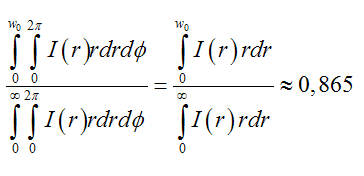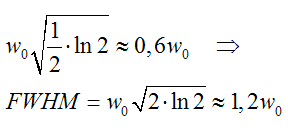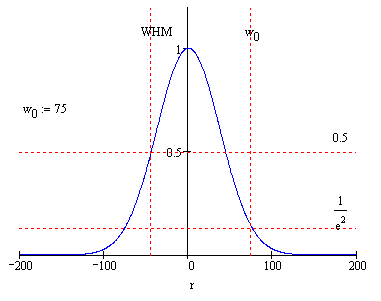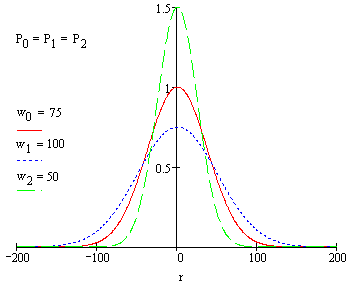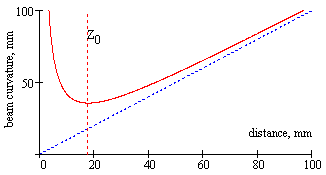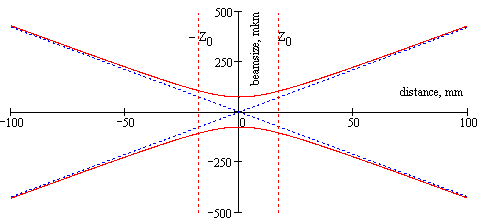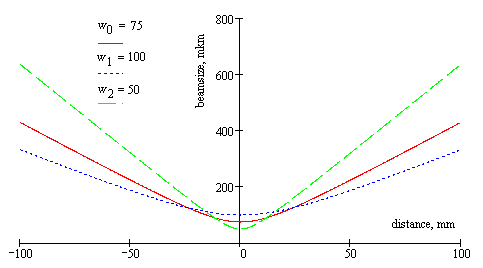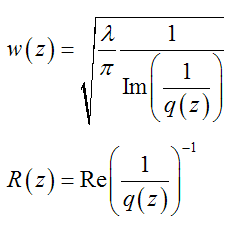Gaussian Beam
The Gaussian beam is the model for a beam of coherent emission having diffraction spreading. The energy of the beam concentrates close to its axis (the paraxial beam) and quickly falls off in a transverse direction. Radial decay of the beam intensity is properly characterized by the Gaussian function. Such a beam is the most accurate diffraction approximation for a single light ray.
Radial Intensity Variation
Variation of the beam intensity with radial distance:
About 86.5% of the total beam’s energy concentrates in the paraxial region:
Intensity
The intensity of the Gaussian beam falls twice at a distance of about 0.6 of spot size:
Radius (Spot Size)
Variation of the beam radius along the beam propagation axis:
Radius of Wavefront Curvature
Variation of the radius of wavefront curvature along the beam propagation axis:
Rayleigh Distance
The Rayleigh distance is the distance at which the radius of wavefront curvature is minimal (therefore curvature is maximal) and the spot area is twice greater than the waist area. Distances z > z0 are called the far-field zone. Distances z < z0 are called the near-field zone.
Angular Spread
Angular spread of the Gaussian beam is given by the asymptotic angle of divergence in the far-field zone. The plus-minus sign means the formula gives only half of full angle of a beam.
Complex Radius of Curvature
The complex radius of curvature q(z) is related to the beam radius w(z) and the radius of curvature R(z) by the definition:
The beam radius and the radius of curvature can be expressed from the complex radius of curvature:


